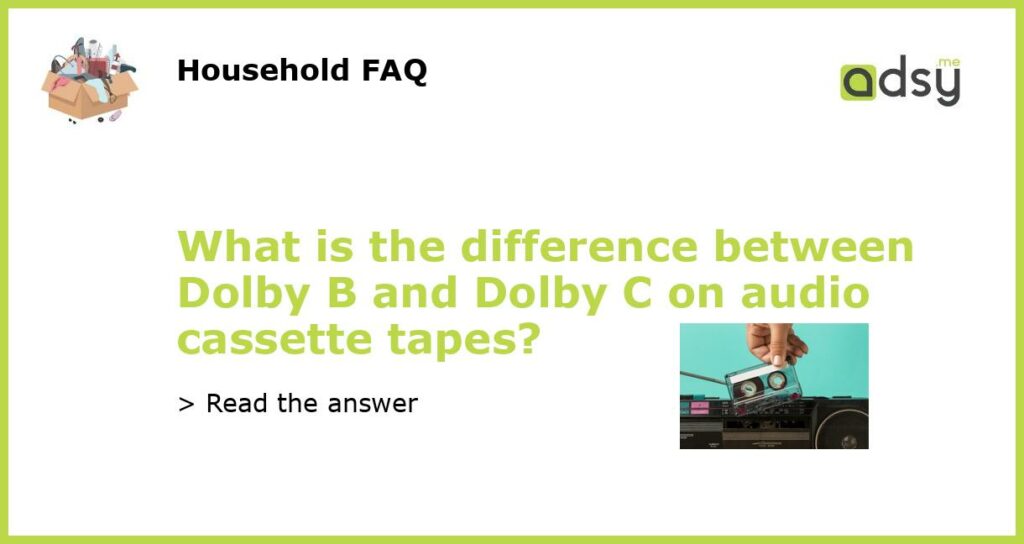Dolby B and Dolby C: The Basics
For those unfamiliar with Dolby noise reduction technology, it is a system designed to reduce the amount of tape hiss on analog audio recordings. Dolby B was introduced in 1968, while Dolby C was developed later in 1980. Both systems work by encoding the audio signal in a way that emphasizes the higher frequencies while reducing the lower ones. When played back, the system reduces the high frequencies and boosts the low ones, reducing the overall noise level.
Dolby B vs Dolby C: The Differences
While both Dolby B and C do a great job at reducing tape hiss, there are some differences between the two. One of the main differences is the amount of noise reduction they provide. Dolby B typically offers about 8-10 dB of noise reduction, while Dolby C can provide up to 20 dB of noise reduction. Additionally, Dolby C offers better frequency response, meaning it can preserve the original audio signal better than Dolby B.
Which System Should You Use?
The system you should use ultimately depends on your audio recording needs. If you are using a low-quality cassette tape or if you are making a recording in a noisy environment, Dolby C may be the way to go. However, if you are using a higher-quality tape and recording in a relatively quiet environment, Dolby B may provide sufficient noise reduction without affecting the audio quality too much.
The Downside of Dolby Noise Reduction
While Dolby noise reduction technology is great for reducing tape hiss, it does come with a downside. Because the system emphasizes the higher frequencies, it can sometimes lead to a loss of overall audio quality. This can lead to a loss of high-frequency detail and a decrease in the overall dynamic range of the recording. Additionally, the system can sometimes introduce unwanted artifacts into the recording, such as a warbling or fluttering sound.
Dolby B vs Dolby C
Overall, both Dolby B and Dolby C are effective at reducing tape hiss, but they are not without their limitations. Dolby C may provide better noise reduction and frequency response, but it can also introduce unwanted artifacts and affect the overall audio quality. Dolby B is a more subtle noise reduction system that may be sufficient for some users. Ultimately, the best system to use depends on your recording needs and personal preferences.






![Claire Richards: Euphoria - Cassette [CASSETTE]](https://m.media-amazon.com/images/I/411vyqk1hNL.jpg)